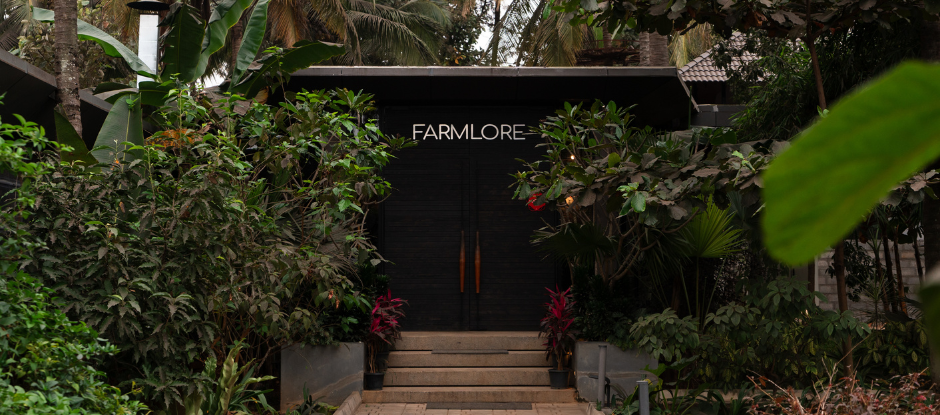The cuisine-agnostic restaurant is a rising star in the world of fine dining and has been named winner of the American Express One To Watch Award, as part of Asia’s 50 Best Restaurants 2025.
There are a lot of farm-to-table restaurants in the world, but Farmlore stands apart with its truly immersive experience on an actual working farm.
The brainchild of chef Johnson Ebenezer and entrepreneur Kaushik Raju is driven by seasonality, sustainability and local produce. For chef-patron Ebenezer, the question about the restaurant’s signature dish starts a long conversation that ends in a short answer: “I don't believe in signatures.”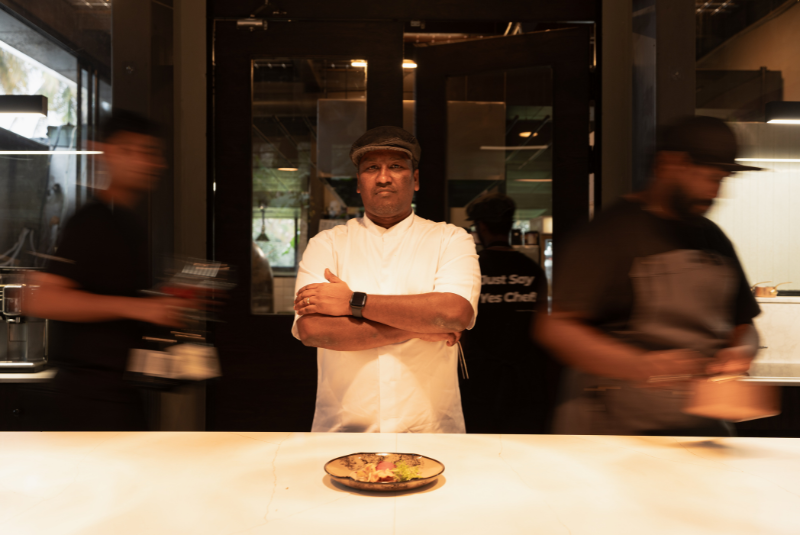
Although Chef Ebenezer doesn't believe in signature dishes, dinners at Farmlore start with red ants in some form
Rather than pinning the restaurant to a fixed format, Ebenezer prefers to showcase dishes that leave an impact, often reinventing recipes and their presentation over time. This makes sense when you look at his varied career path, which includes working at five-star hotels, dabbling in the cruise industry, cooking in various restaurants across the US, and taking a leap of faith to start Nadodi in Kuala Lumpur, Malaysia.
In 2019, Ebenezer returned to his home country of India with a dream to launch a restaurant. Bringing on chefs Mythrayie Iyer and Avinnash Vishaal, he launched Lore in 2019. However, the pandemic set them on a different path, and the passion project evolved into Farmlore – the name cleverly combining ‘folklore’ and ‘locavore’ – in 2021, on a 37-acre working farm in Bengaluru.
A table among the trees
The farm-to-table restaurant only seats 18 people and features large floor-to-ceiling glass windows offering views of lush greenery: banana and bay trees, and swathes of lemongrass, which was planted to ward off mosquitos. Fresh produce includes jackfruit, mulberry and coconut trees, as well as five varieties of mango.
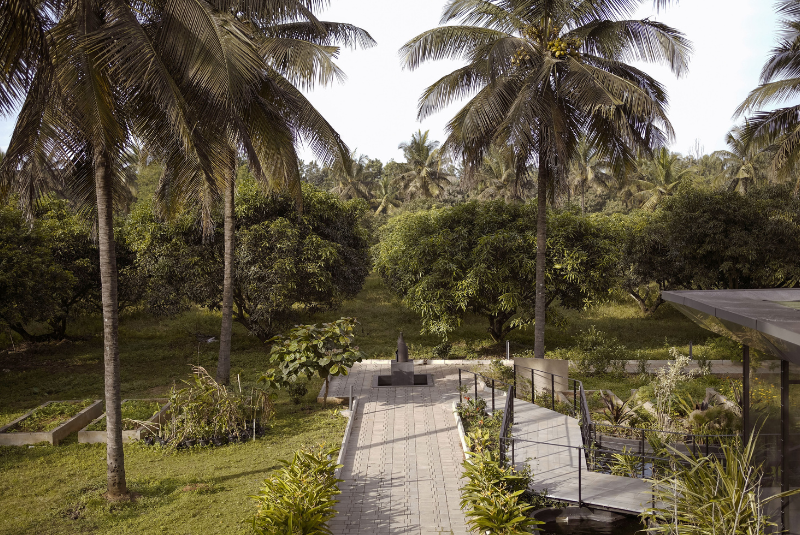
The 37-acre farm features banana, jackfruit, mulberry, coconut and five varieties of mango
It boasts a solar-powered hydroponic system which produces vegetables while minimising the carbon footprint and a vertical farm to maximise growing space. Depending on the season, up to 80 per cent of the produce comes from the farm, which is powered entirely by solar and renewable energy. Outside the walls of the restaurant, traditional farming techniques are employed, such as growing radishes alongside vegetable patches to enhance the nitrogen levels in the soil, and milk is sourced from the farm-owned Hallikar cows.
Old and new
In the kitchen, chefs work with a variety of cooking methods – ranging from the back-to-basics approach of wood-fired ovens all the way through to spherification.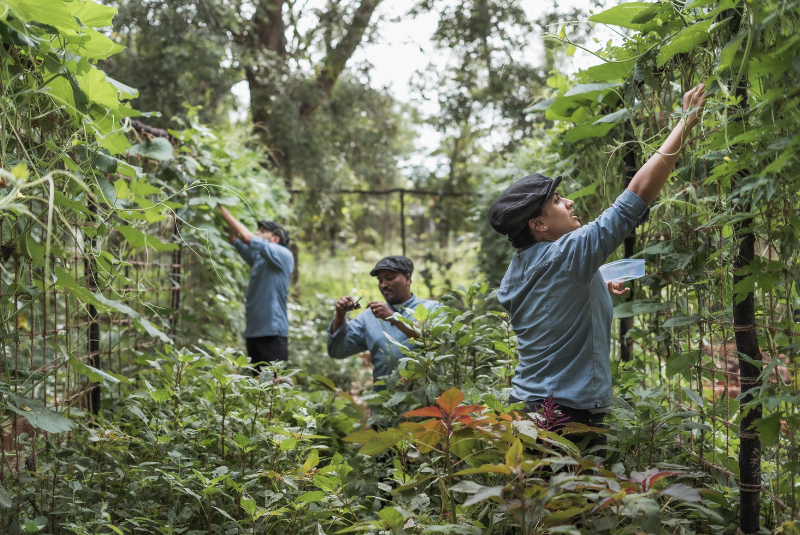
At times, 80 per cent of the produces comes from the land surrounding the restaurant
The restaurant’s vibe is neutral so the food can take centre stage, apart from the large colourful mural which covers an entire wall. Upon closer look, it’s a representation of the state of Karnataka, highlighting the culture and artistic traditions of the region. This symbolises Ebenezer’s desire to incorporate the stories of the region and its food culture in the five and 10-course tasting menus.
An ever-changing menu
With a passion for storytelling, Ebenezer develops dishes which often have a message behind them. The inspiration for his dish, Seataphor, came from a visit to the beaches of Kochi, a major port city on India’s west coast where he sources some of the seafood for Farmlore.
After seeing the coconut palm-lined beaches littered with plastic, he embarked on a research mission. “Coconut trees spread globally because their fruit floated across ocean currents, but now we’re polluting the sea with plastic and crude oil,” says Ebenezer.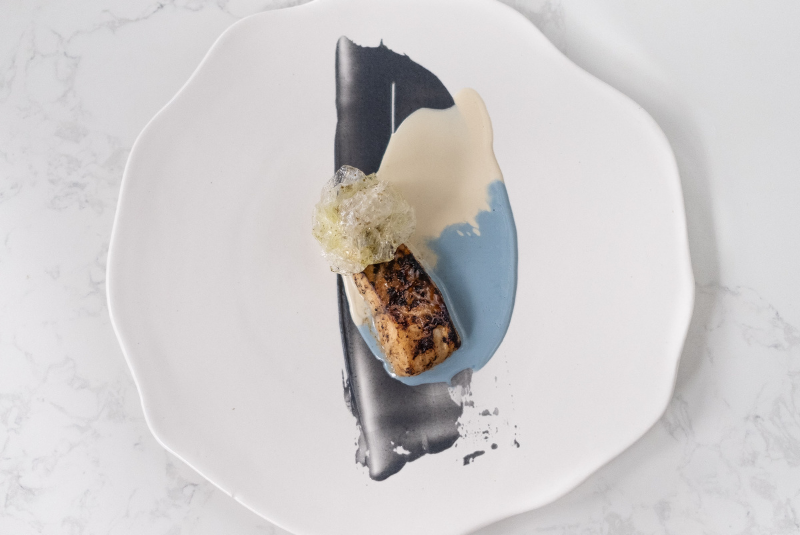
The dishes at Farmlore often tell stories
The dish features Kochi snapper and two sauces: a coconut-based white sauce and a striking blue sauce made with spirulina to represent the ocean. It’s topped with what looks like crinkled plastic wrap, made from potato starch. Using molecular gastronomy, he mixed glyceride with coconut oil and charred coconut shells to add a splash of black underneath, symbolising an oil spill. The message is clear: “Save the ocean.”
Another dish is Kuri. “Kuri means lamb in this part of the world,” Ebenezer explains. Bannur sheep, introduced to him by local chefs, are a breed known for their exceptional meat. People who work in the fields eat Bannur lamb with millet and ragi dumplings for a protein-rich meal which can sustain them during the day. At Farmlore, the traditionally rustic dish has been reinterpreted and elevated.
Although Ebenezer refuses to have a signature dish, every meal begins with red ants in some form. High in protein, they’re eaten by various Indigenous tribes in the Western Ghats. Another crowd favourite is the local whisky-filled Trippy Gummy Bears, inspired by the movie Ted.
A constantly evolving menu means plenty of reasons for diners to come back
The menu at Farmlore is updated on a monthly basis, which is drawing in regulars – most of whom are in their 20s and 30s. It’s suggested diners come in with an open mind: the menu is never announced ahead of time to enhance the anticipation.
With new space Omnisense – a private dining room connected to the research and development kitchen at Farmlore – opening at the start of March, Ebenezer and Raju have no plans to slow down their storytelling, ensuring the restaurant truly is one to watch.
The full list of Asia’s 50 Best Restaurants 2025 will be revealed on 25 March from Seoul.
